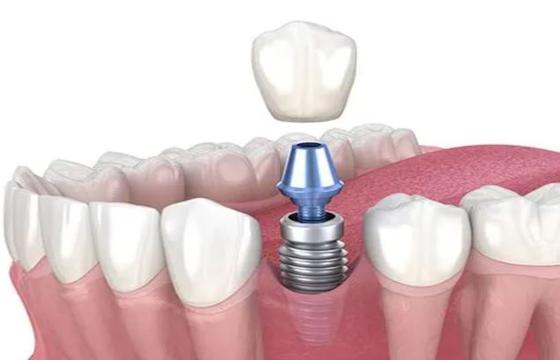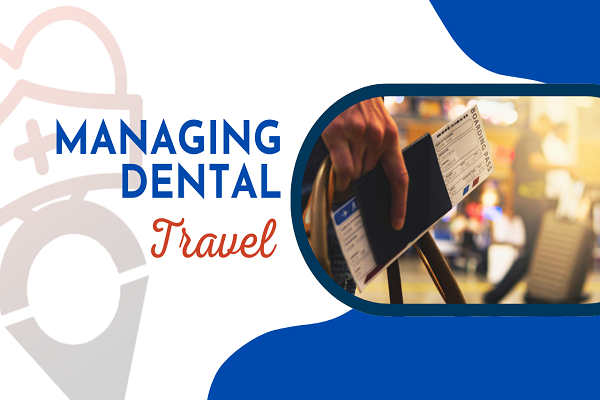
Private Nanodent Oral and Dental Health Center
- Akkuyu - Konyaaltı/Antalya
- 9 km from center
- 22 km to Airport
- Özel Nanodent Ağız Ve Diş Sağlığı Merkezi
The implant is generally inserted the same surgical appointment as the extraction. Because the patient doesn't have to wait for the extraction site to heal before receiving the implant, this method can save them time. However, not every patient is a good candidate for immediate implantation and the state of the surrounding tissues and bone will affect the procedure's outcome, among other things. So what are Immediate implants and which situations to use them?

Immediate implants is aprosthetic tooth or teeth are placed into the jawbone immediately after a tooth extraction. In terms of shortening the duration of treatment and protecting the local soft tissue and bone architecture, immediate implants may be beneficial. To guarantee the best potential outcome for the patient, however, they need to be carefully evaluated and planned for by the oral surgeon or dentist.
It may take many months to finish the full instant implant treatment process, from the first evaluation to the last restoration. The precise timeframe, however, will differ according on treatment programs and individual circumstances.
Initial Assessment, Examination, Extraction and Implant Placement(one visit), usually takes a couple of hours. Osseointegration Period, this process typically takes several months. The final prosthetic tooth or teeth attached to the implants(one visit). Restoration process may take a few weeks to complete.
Immediate dental implants come in a variety of forms, each intended to meet unique patient requirements and clinical circumstances. The following are some typical kinds of instant implants,
Immediate Implants for a Single Tooth, in this type of implant, a single lost tooth is replaced right away after extraction with an implant and a crown.
Multiple immediate Implants, a dental bridge or implant-supported denture may be supported by several instant implants if several neighboring teeth are lost.
All-on-4 or All-on-6 Immediate Implants, in this treatment, a whole arch of teeth (either upper or lower) is supported immediately following tooth extractions by implanting four or six dental implants strategically placed within the jaw. Patients who are missing all or most of the teeth in one arch are frequently treated with it.
Same-Day Teeth with Immediate Implants, in certain circumstances, prosthetic teeth that are put into immediate implants the same day as surgery can be supported by immediate implants. With this method, patients may get out of the dentist's chair and have their teeth functioning right away.
Flapless Immediate Implants, in a flapless surgical procedure, the implant is positioned without raising the gum tissue. This method can facilitate quicker recovery and lessen surgical stress.
The socket-shield approach preserves the architecture of the surrounding soft tissue and bone around the implant site by preserving a small section of the tooth root together with the surrounding bone.
Zygomatic Implants, unlike maxillary implants, zygomatic implants are longer and anchor into the zygomatic bone, which is the cheekbone. They are utilized when conventional implants are impractical because to severe bone loss in the upper jaw.
The complexity of the case, the patient's oral health, and the particular methods the dentist or oral surgeon uses can all affect how long an instant dental implant therapy takes.
An outline of the timetable for prompt implant therapy is provided below:
Initial Assessment, to examine the bone structure and decide whether to insert implants right away, a comprehensive examination and evaluation of the patient's oral health are usually conducted at the start of the procedure. This may involve x-rays and perhaps 3D imaging.
Extraction and Implant Placement, the tooth or teeth are removed and the dental implants are inserted into the extraction sites, all in a single surgical session. Depending on the intricacy of the treatment and the number of implants being put, this process often takes a few hours.
Osseointegration Period, following implant placement, the bone fuses with the implants during a healing phase known as osseointegration. Usually taking many months, the patient may have to wear a temporary prosthetic tooth or teeth during this process.
Final Restoration, the last prosthetic tooth or teeth can be affixed to the implants when osseointegration is finished. To fit onto the implants, a bespoke crown, bridge or denture may need to be made using impressions. It can take a few weeks to finish the last repair step.
Before having the operation, patients and dental professionals should carefully weigh the possible advantages and hazards of immediate implants.
Shorter Treatment Time, since the implant is placed right after the tooth is extracted, there is no need for a second healing phase, which can add considerably to the entire treatment time.
Preservation of Bone and Tissue, after extraction, placing an implant as soon as possible helps keep the surrounding soft tissue and bone in place. This can assist in preserving the gums' and jawbone's natural shapes and preventing bone resorption.
Better Esthetics, by reducing the amount of time without a tooth or teeth, immediate implants can help preserve the smile's natural look. Immediately following implant implantation, patients might have a temporary restoration, which improves aesthetics while the implant heals.
Convenience, by eliminating the need for several trips to the dentist or oral surgeon, patients may value the ease of having the full implant procedure finished in fewer appointments.
Chance of Failure, compared to conventional implant insertion methods, immediate implants have a somewhat increased chance of failure. Implant failure can be caused by a number of things, including insufficient bone volume, poor healing and infection.
Infection and Complications, Implant placement right after extraction raises the possibility of infection and other issues, particularly if post-operative care and good dental hygiene are neglected.
Osseointegration and Bone Healing, the capacity of the bone to repair and integrate with the implant is critical to the immediate implant's success. Implant instability or failure can occasionally be caused by inadequate bone density or poor healing.
Esthetic Compromises, although immediate implants have an advantage in terms of appearance, there is a chance that these benefits might be compromised if the surrounding tissues do not heal correctly or if something goes wrong while the healing process is underway.
Patient Selection and Planning, not every patient is a good fit for implants to be placed right away. To decide who is a good candidate for the treatment, factors including general health, dental cleanliness and the state of the surrounding tissues need to be carefully considered.



*The treatment pages provided on this platform are intended for informational purposes only and do not constitute medical or dental advice, diagnosis, or treatment recommendations. The information presented on these pages is not a substitute for professional medical or dental advice from qualified healthcare providers.
*By accessing and using the treatment pages on this platform, you acknowledge and agree to the terms of this disclaimer. If you do not agree with these terms, please refrain from using the treatment pages.